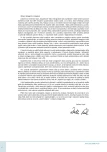TESTICULAR TUMOURS - SURGICAL MANAGEMENT
Authors:
prim. MUDr. Ivan Pavlík; MUDr. Libor Šafařík, CSc.
Authors‘ workplace:
Urologická klinika 1. LF UK a VFN, Praha
Published in:
Urol List 2006; 4(3): 27-32
Overview
The objective of surgical treatment of testicular cancer is to examine or remove the tumorous mass suspicious for testicular cancer and to intervene in the retroperitoneum. It is applicable for stage 3 seminomas and stage 1 and 3 non-seminoma tumours in the diagnostic and therapeutic process.
Stage 3 seminomas are typical for the presence of lymphogenic metastases above the diaphragma or other distant metastases. Radiotherapy is used as complementary therapy only.
Three methods with the same final effect are currently used for the treatment of stage 1 non-seminoma tumours: watchful waiting, or surveillance, Retroperitoneal Lymph Node Dissection (RPLND) and adjuvant chemotherapy. Relapsing patients are treated with chemotherapy. Therapy of stage 2 non-seminoma patients involves RPLND, chemotherapy or the combination of the above two therapies. Therapeutic approaches vary: the preferred first-line treatment is either RPLND (e.g. USA), or chemotherapy (Europe), capable of inducing complete remission. The article further deals with different surgery techniques. The author concludes that laparoscopic RPLND is the appropriate surgery in the case of non-seminomatous germ cell tumours (NSGT) for its staging (stage 1) and should be preferred to open surgery for its low morbidity. The benefit of the surgery, especially in terms of its curative effect, has not yet been clearly determined for stage 2. Surgery for residual tumour after chemotherapy should be considered a risky but beneficial strategy to precise the staging; curative effect is possible in the case of vital tumour, yet another 2 to 4 cycles of adjuvant chemotherapy are recommended.
KEY WORDS:
testicular tumours, inguinal exploration, orchiectomy, preserving intervention, tumour resection, retroperitoneal lymphadenectomy, RPLND, surgery technique in RPLND, laparoscopic RPLND, NSGT
Sources
1. Abrahámová J. Nádory varlat. Postgraduální medicína 2003; 5(6): 599-615.
2. Heidenreich A, Weissbach L, Holth W et al. Organ sparing surgery for malignant germ cell tumor of the testis. J Urol 2001; 166: 2161-2165.
3. Skinner DG, Leadbetter WF. The surgical management of the testis tumors. J Urol 1971; 106: 84-93.
4. Weinstein M. Lymphatic drainage of the testes. Atlas Urol Clin North Am 1999; 7: 1-7.
5. Walsh P, Retik AB, Vaughan ED (eds). Campbell´s Urology. 8th ed. Philadelphia: WB Saunders 2002.
6. Donohue JP. Retroperitoneal lymphadenectomy: the anterior approach including bilateral suprarenal hilar disection. Urol Clin N Am 1977; 4: 509-521.
7. Donohue JP, Thornhill JA, Foster RS et al. Retroperitoneal lymphadenectomy for clinical stage A testis cancer (1965-1989): Modifications of technique and impact on ejaculation. J Urol 1993; 149: 237-243.
8. Donohue JP, Foster RS, Rowland RG et al. Nerve sparing retroperitoneal lymhadenectomy with preservation for ejaculation. J Urol 1990; 144: 287-292.
9. Klein EA. Nerve-sparing retroperitoneal lymphadenectomy. Atlas Urol Clin 1995; 3: 63-79.
10. Hamdy FC, Basler JW, Neal DE et al. Management of Urological Malignancies. London: Churchill Livingstone 2002.
11. Baniel J, Foster RS, Rowland RG et al. Complications of primary retroperitoneal lymph node dissection. J Urol 1994; 152: 424-427.
12. Lebovitch I, Rowland RG, Goldwasser B et al. Incidental appendectomy during urological surgery. J Urol 1995: 154: 1110-1112.
13. Rassweiler JJ, Seemann O, Henkel TO et al. Laparoscopic retroperitoneal lymph node disection for nonseminomatous germ cell tumors: indications and limitations. J Urol 1996; 156: 1108-1113.
14. Nelson JB, Chen RN et al. Laparoscopic retroperitoneal lymph node disection for clinical stage I nonseminomatous germ cell testicular tumors. Urology 1999; 54: 1064-1067.
15. Rassweiler JJ, Frede T, Lenz E et al. Long-term experience with laparoscopic retroperitoneal lymph node dissection in the management of low-stage testis cancer. Eur Urol 2000; 37: 251-260.
16. Wonfield HN. Laparoscopic retroperitoneal lymphadenectomy for cancer of the testis. Urol Clin N Am 1998; 25(3): 469-478.
17. Palese MA, Su LM, Kavoussi LR. Laparoscopic retroperitoneal lymph node dissection after chemotherapy. Urology 2002; 60(1): 130-134.
18. Janetschek G, Peschel R, Hobisch A. Laparoscopic retroperitoneal lymph node dissection. J Endourol 2001; 15(4): 449-453.
19. Rassweiler J, Tsivian A, Kumar AV. Oncological safety of laparoscopic surgery for urological malignancy: experience with more than 1,000 operations. J Urol 2003; 169(6): 2072-2075.
20. Janetschek G, Hobisch A, Peschel R. Laparoscopic retroperitoneal lymph node dissection. Urology 2000; 55(1): 136-140.
21. EAU Guidelines - update. Guidelines on laparoscopy 2003: 23. http://www.uroweb.nl/files/uploaded_ files/2002_Testicular_secure.pdf
Labels
Paediatric urologist UrologyArticle was published in
Urological Journal

2006 Issue 3
Most read in this issue
- LYMPHATIC DRAINAGE OF THE TESTES
- TESTICULAR TERATOMA - CURRENT CLASSIFICATION ACCORDING TO WHO 2004
- PENILE PROSTHESIS IN THE THIRD MILLENNIUM
- LARGE CELL CALCIFYING SERTOLI CELL TUMOR-REVIEW
